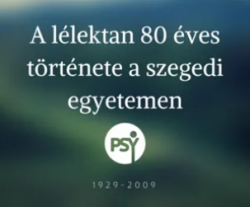Fenyegető ingerek észlelése mindennapi és negatív helyzetekben
Arató Ákos, Stecina Diána Tünde, Losonci Adrienn, Zsidó András Norbert, PTE BTK Pszichológiai Intézet
Arató Ákos, Stecina Diána Tünde, Losonci Adrienn, Zsidó András Norbert
PTE BTK Pszichológiai Intézet
Kutatásunk középpontjában a potenciálisan fenyegető ingerek észlelése áll. Számos modern elmélet szerint a fenyegető ingerek percepciója akkor a leggyorsabb, ha eredetüknek megfelelő környezetben észleljük őket. Kísérletünk során arra voltunk kíváncsiak, hogy az evolúciós és modern eredetű fenyegetések esetében, az azonos vagy az eltérő eredetű kontextus, mennyiben befolyásolja a stimulusok percepcióját. Azt is vizsgáltuk továbbá, hogy hogyan befolyásolják a negatív érzelmek a figyelmi folyamatokat. Számos elmélet szerint az érzelmi ingerek elsőbbséget élveznek a figyelmi feldolgozás alatt, ez pedig különösen igaz lehet a negatív affektív ingerekre. A fenyegető ingerek észlelését egy általunk összeállított vizuális keresési feladattal mértük. A vizsgálat során semleges és negatív érzelmi töltetű, evolúciós és modern háttereken elhelyezett fenyegető ingerekre adott reakcióidőket hasonlítottunk össze, a kontextus kongruens és inkongruens együttjárások, illetve az affektív hatás tükrében. A fenyegető ingereket további két csoportra osztottuk, amelyek a modern és ősi félelmi stimulusoknak felelnek meg. Vizsgálatunk eredménye részben alátámasztja a fenyegető stimulusok kontextus kongruencia szerinti észlelését. A negatív érzelmek figyelemelterelő hatását sikerült bizonyítani a vizsgálat során – a vizsgálati személyek szignifikánsan lassabban találták meg a célingereket negatív affektív, mint semleges háttereken.
Kulcsszavak: Fenyegetés, figyelem, vizuális keresés, negativitási hatás, kontextus hatás
English abstract
Our research is focused on the detection of potentially threatening stimuli. According to several modern theories, the perception of threatening stimuli is fastest when their surrounding environment is congruent with their origin. We aimed to examine the influences of congruent and incongruent environments on evolutionary and modern threatening stimuli. The other purpose of our research was to observe the effects of negative emotions on attentional processes. As stated in numerous theories and experiments, affective stimuli, especially negative ones, are often given priority in attentional processing. The perception of threatening stimuli was measured by our very own visual search task. We compared reaction times on the basis of congruent and incongruent correlations and affective influence, given to threatening stimuli placed on evolutionary and modern backgrounds of neutral or negative affective valence. The target stimuli were divided into the two groups of evolutionary and modern context as well. The results of our research partially supports the faster perception of threatening stimuli in congruent environments. The distractive effect of negative emotions on attention was proven by our research, as subjects found the target stimuli significantly slower on negative affective, than neutral backgrounds.
Key words: perception of threat, attention, visual search negativity effect, context effect






